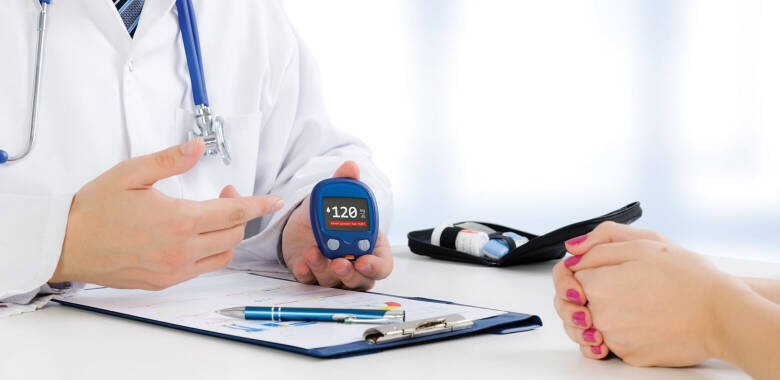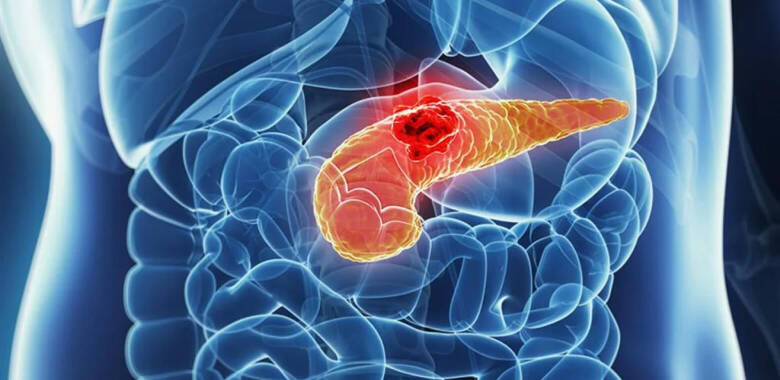According to the Diabetes Atlas, the number of diabetic patients in Ukraine reached over 2.3 million by the end of 2021.
The in time detection and prevention of the disease can significantly reduce the figures, as, depending on the type of diabetes, it can be treated or controlled. Read more about what symptoms are indicative of the disease in this article.
Diabetes: what to pay attention to
The characteristic manifestations of diabetes include excessive blood pressure and frequent urination. This is due to the increased level of glucose in the blood - the body demands and processes more fluid. People often get used to these symptoms, ignoring them and other body alarms. It is worth paying attention to additional signs that may occur before the typical ones and indicate the pre-diabetic state.
Lowering eyesight
In the early stages of the diabetes, the eye cannot focus well on objects due to the high level of glucose in the blood. Blurred vision occurs, objects become blurred and dull. If the disease persists for a long time, blood-bearing vessels in the rear part of the eyeball become damaged, which can lead to cataract, glaucoma, in severe cases - to blindness.
Chronic fungal infection
One of the signs of diabetes is frequent fungal infections. Increased glucose level and decreased immunity contribute to the growth of the fungal environment. The most common type of fungal infection is candidiasis, as well as infections of the urinary tract and skin. People often self-treat these diseases for years without realizing that this is a sign of primary diabetes, and you should first contact an endocrinologist or a general practitioner.
A sudden change of mood
Weakness, frustration or passivity - mood changes in diabetes are often the result of the effect of glucose level on mental performance. People can not control their emotions, they feel especially bad because of the elasticity disorder of the cerebral vessels. The central nervous system constantly "reacts" to a surplus of sugar in the body, and it quickly deteriorates.
Wounds that last for a long time
Slow healing of wounds is a typical sign of a high blood glucose level. Any skin injuries are not only treated with difficulty, but are also often accompanied by infections. This is especially true for injuries on the limbs. Severe forms of diabetes are defined by chronic sores of the deep tissues of the foot.
Dark spots on skin
People with diabetes develop dark spots on the skin in the neck, groin, elbows, and knees - rough skin. These changes in skin color and texture are a sign of insulin resistance. Over time, these areas become rough, flaky and crusty. Blisters and cracks appear on the bones and feet.
Disorders of the gastrointestinal tract (GI tract)
Elevated blood sugar levels affect digestion, leading to nausea, hunger, or diarrhea. Frequent symptoms of poor gastrointestinal function may indicate pre-diabetes - it is worth examining and finding the cause of such body reaction.
Weight loss
Sudden weight loss without changing your normal diet or exercise regimen can be a sign of diabetes. Especially if it is accompanied by a constant or partial feeling of hunger.Sugar, intended for energy intake, is not absorbed and is eliminated from the body with urine. In order to renew strength, muscle mass and fatty tissue are burned. This process can cause significant damage to human health over time.
Hair and rash on the face
A sign of excess glucose in the blood in women is facial hairiness. This is caused by increased level of male hormones in cells. Also acne may occur, especially in adolescence.
Skin bumps
Papillomas and warts that appear on the skin and mucous membranes can indicate insulin resistance of the body. It is necessary to contact a physician, if they increase and change, or if new ones appear over time.
Sexual problems
The most frequent damage caused by diabetes is sexual dysfunction. It occurs in about half of the male patients and one third of the female patients. It is marked by impaired ejaculation and painful sensations during the sex act. The inflammation caused by too much glucose affects the part of the brain responsible for the sexual stimulation. Occurrence of various types of disorder of this sphere can also be triggered by hormonal disorders: low levels of testosterone in males, increased - in women and lack of insulin.
These signs are especially worth paying attention by those whose close relatives have been diagnosed with this disease. The timely diagnosis of the disease will allow a proper diet, the addition of the necessary vitamins and minerals, as well as a more healthy lifestyle.
For type I diabetes, you can regulate the glucose level in the body by injecting the necessary dose of insulin, or choose another type of treatment. Type II diabetes requires a more diligent approach to the body - improving sleep patterns, reducing the level of stress, changes in eating habits. A healthy lifestyle will help to avoid unnecessary symptoms and consequences of the disease. Immediate examination and prevention will enable you to stop the process of the development of diabetes at an early stage.










